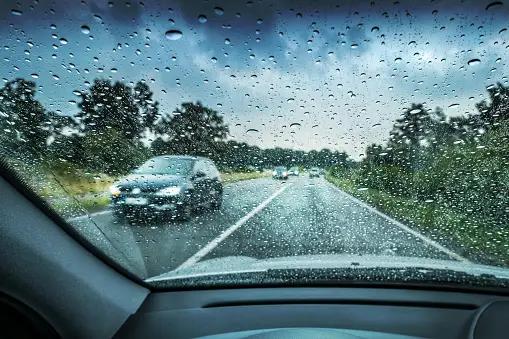Why Driving In Bad Weather Is Dangerous

Driving in inclement weather is uncomfortable and a significant safety hazard. Every year, adverse weather conditions contribute to countless accidents, turning routine drives into perilous journeys. This article delves into the reasons why driving in bad weather is so dangerous, emphasizing the increased risks and challenges drivers face.
Reduced Traction and Increased Braking Distances
Rain, snow, and ice can create slippery road conditions, reducing the grip tires have on the pavement. This loss of traction makes it difficult for drivers to control their vehicles, leading to skidding and potential loss of control.
Rain can cause hydroplaning, where a layer of water builds up between the tires and the road surface, leading to a loss of traction. This can happen even at lower speeds and is more likely in worn tires.
In areas like Alaska, snow and ice are common. These conditions drastically reduce tire grip, making it challenging to steer, accelerate, or brake effectively.
Increased Braking Distances: The lack of traction significantly increases the distance required to stop a vehicle. On icy roads, stopping distances can be up to ten times longer than on dry roads.
Reactions Take Longer
Bad weather not only affects the physical capabilities of a vehicle but also impacts driver reaction times. When visibility is low, and road conditions are unpredictable, drivers need more time to process and react to situations.
In bad weather, whether it’s heavy rain, fog, snow, or a blizzard, visibility is significantly reduced. This makes it harder for drivers to see other vehicles, pedestrians, and road hazards, delaying their reaction time.
Adverse weather conditions demand higher concentration and attention from drivers. This mental strain can lead to slower decision-making as drivers are processing more information than usual. In situations requiring quick reflexes, such as avoiding a sudden obstacle, bad weather conditions can hinder a driver’s ability to perform emergency maneuvers effectively.
Impacts On Accidents, Injuries, And Fatalities
The challenging conditions of bad weather not only increase the risk of vehicular accidents but also escalate the severity of injuries and fatalities. The correlation between adverse weather and traffic incidents is a critical concern for road safety.
Statistics show a significant increase in accidents during bad weather. Factors like reduced visibility and traction contribute to more frequent collisions, spin-outs, and multi-car crashes. Accidents in bad weather often result in more severe injuries. Factors like higher impact speeds and the unpredictability of skidding vehicles contribute to this increased severity.
Unfortunately, bad weather conditions also lead to a higher fatality rate in road accidents. This is especially true in regions with extreme weather, like Alaska, where icy roads and limited visibility are common.
A car accident attorney in Alaska becomes crucial in such scenarios. They not only understand the legal elements of accidents in harsh weather conditions but also offer essential support to those affected by such tragic incidents.
If you are handling a car accident in Alaska due to the challenging weather conditions, do not face it alone. Choose a reputable car accident attorney to guide you through every step of the legal process.
Featured Image Resource : https://www.istockphoto.com/photo/driving-in-the-rain-gm612261748-105438915?utm_campaign=srp_photos_top&utm_content=https%3A%2F%2Funsplash.com%2Fs%2Fphotos%2Fdriving-in-rain&utm_medium=affiliate&utm_source=unsplash&utm_term=driving+in+rain%3A%3A%3A


